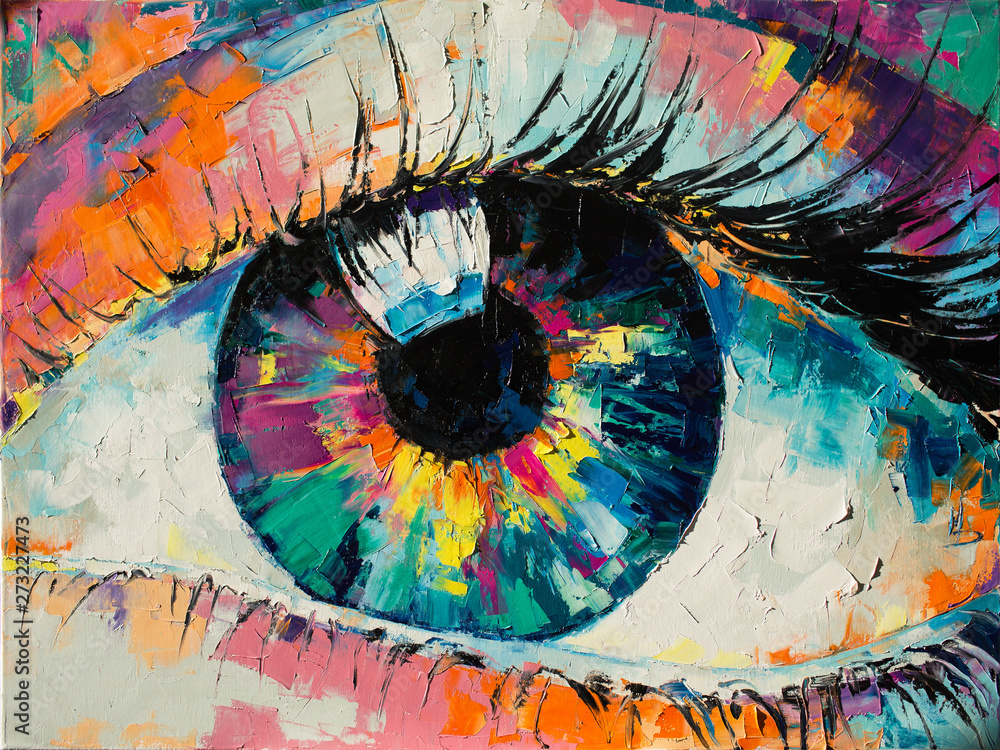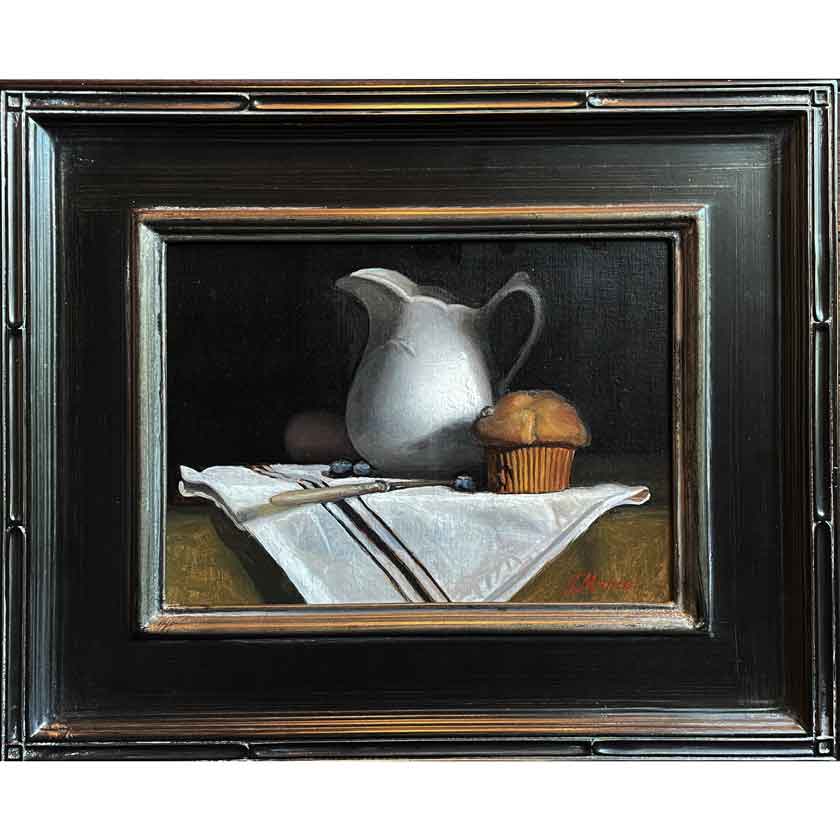Discover Timeless Artwork Oil Paintings for Sale Today
Discover Timeless Artwork Oil Paintings for Sale Today
Blog Article
Discovering Everything About Oil Paints: A Guide to Comprehending Their Appeal and Value
Oil paintings have captivated audiences for centuries, providing a peek into the artistic mastery of different ages. Their rich history is intertwined with cutting-edge techniques and profound psychological expression. Recognizing the products and methods behind these artworks can enhance appreciation. Furthermore, the market for oil paints presents possibilities for investors and enthusiasts alike. As one explores this fascinating world, the concern occurs: what makes an oil paint genuinely useful?
The History of Oil Paint: A Journey Via Time
Oil paint has roots that date back to old times, it truly grew during the Renaissance, when musicians discovered its adaptability and rich color capacity. Early instances can be traced to the 7th century, with methods evolving notably throughout cultures. The tool ended up being famous in Northern Europe in the 15th century, especially via the works of musicians like Jan van Eyck, who originated its use for comprehensive realistic look and vibrant colors. This period noted a departure from tempera paints, enabling for greater deepness and texture. As oil painting spread, it influenced countless artists, causing work of arts by distinguished numbers such as Leonardo da Vinci and Rembrandt. The tool's legacy continues, forming the art globe well right into modern-day times.
Understanding Oil Paints: Products and Techniques
As artists discover the globe of oil paints, they run into a diverse variety of materials and strategies that specify this tool. The key elements of oil paint consist of pigments, which offer color, and drying out oils, such as linseed, that bind the pigments and facilitate application. Numerous additives can change the paint's appearance and drying out time, improving versatility. Strategies like glazing, where clear layers are developed, and impasto, which involves applying thick paint, enable different visual impacts. In addition, making use of brushes, palette knives, and also fingers can produce special structures and surfaces. Comprehending these materials and techniques allows musicians to totally express their imagination and achieve the desired influence in their artwork.
The Role of Shade in Oil Paints
Color plays a critical role in oil paints, affecting both aesthetic allure and emotional resonance. Understanding shade concept essentials, consisting of the relationships between hues, can enhance an artist's ability to convey mood and atmosphere. Furthermore, grasping shade mixing methods permits higher deepness and richness in a paint's palette.

Shade Concept Fundamentals
Recognizing color theory is essential for musicians working with oil paints, as it creates the foundation for developing visually interesting and unified compositions. Shade theory includes the research study of exactly how colors engage, the shade wheel, and the partnerships in between main, secondary, and tertiary shades. Artists make use of corresponding shades to improve contrasts and create centerpieces, while comparable shades advertise unity and cohesiveness within a piece. In addition, the principles of cozy and cool shades affect the understanding of deepness and room in a painting. Realizing these concepts allows artists to control shade properly, assisting the visitor's eye and interacting their desired message. Mastery of color concept inevitably enriches a musician's capacity to convey emotions and concepts via their work.
Emotional Influence of Shade
The psychological influence of color in oil paints plays an important duty in exactly how customers link and view with art work. Shades stimulate specific sensations and moods, affecting the customer's emotion. For example, cozy shades like oranges and reds can develop a feeling of heat and energy, while great tones such as blues and greens frequently evoke calmness or self-questioning. Artists tactically select color combinations to improve narrative aspects, directing the audience's emotional journey. The saturation and contrast of colors further enhance these effects, attracting attention and producing emphasis. Inevitably, the interaction of colors in oil paintings not only improves their visual charm however likewise works as a powerful tool for psychological expression, enhancing the audience's experience and interpretation.
Shade Combining Techniques
While lots of aspects of oil painting add to the total structure, mastering shade blending methods is crucial for achieving desired effects and deepness. Shade blending can be come close to with various methods, consisting of the additive and subtractive processes. Additive blending involves combining shades of light, while subtractive blending depends on pigments, where colors blend to create brand-new tones. Artists frequently utilize a minimal scheme to develop harmonious works, comprehending the relationships in between primary, second, and tertiary colors. Strategies such as glazing and scumbling even more enhance depth and luminance. By skillfully blending colors, a musician can evoke feelings, develop focal points, and accomplish a feeling of realism, eventually elevating the paint's visual and emotional effect.
Famous Oil Painters and Their Iconic Works

Well known for their proficiency of shade and technique, oil painters have actually developed some of the most celebrated artworks in history. Popular musicians like Vincent van Gogh mesmerized target markets with his emotive brushwork in "Starry Night," while Claude Monet's "Perception, Daybreak" prepared for Impressionism. Leonardo da Vinci's "Mona Lisa" continues to be a long-lasting icon of imaginative genius, showcasing his ability in recording human expression. On the other hand, Rembrandt's "The Night Watch" illustrates his innovative use light and shadow. Other noteworthy figures consist of Pablo Picasso, that changed modern-day art with his strong trial and error in jobs like "Les Demoiselles d'Avignon," and Georgia O'Keeffe, whose vivid representations of blossoms and landscapes aided specify American innovation. Each musician's special style contributed substantially to the oil paint landscape.
Just how to Assess the High Quality of an Oil Painting
Evaluating the top quality of an oil paint involves a mindful assessment of craftsmanship techniques, as well as an evaluation of shade and composition. Observing brushwork, layering, and the application of paint can disclose the artist's skill level. Furthermore, the interaction of colors and the overall setup of components contribute substantially to the paint's visual value.
Evaluating Craftsmanship Techniques
A meticulous assessment of workmanship methods is necessary for establishing the high quality of an oil painting. Evaluators ought to first examine the application of paint; thick, textured brushstrokes might recommend a skilled hand, while excessively consistent applications can indicate an absence of depth. oil paintings for sale. The layering strategy is likewise essential; the presence of lusters and differed thickness can improve luminosity and intricacy. Furthermore, the quality of the products used, such as the canvas and pigments, plays a considerable function in longevity and overall aesthetic. Focus to information in aspects like sides and changes in between shades reflects the musician's commitment to their craft. Inevitably, these techniques add to the painting's psychological influence and market value, serving as signs of the artist's ability and intent
Analyzing Color and Structure
While assessing the high quality of an oil paint, one have to concentrate on the interplay of color and structure, as these aspects are fundamental to the art work's total influence. Shade choices can establish and stimulate feelings mood; as a result, the musician's combination should be analyzed for consistency and contrast. A well-balanced make-up guides the visitor's eye and produces a feeling of unity. Musicians usually employ techniques like the guideline of thirds or leading lines to improve visual interest. Additionally, using light and shadow can include deepness, enhancing the three-dimensionality of the paint. Ultimately, a successful oil paint weds shade and structure, engaging the audience and inviting a deeper appreciation of the musician's vision and strategy.
Caring for and Preserving Oil Paintings
Appropriate care and conservation of oil paints is essential for maintaining their honesty and long life. To shield these art work, it is important to display them away from straight sunlight, which can cause fading and staining. Keeping a secure atmosphere with regulated temperature and moisture additional aids in stopping damage. Cleaning must be done carefully using a soft, dry cloth, preventing any kind of harsh chemicals that can damage the paint or varnish. Regular inspections for indicators of damage, such as cracking or flaking, are a good idea. When delivering or keeping oil paints, proper extra padding and framing are essential to stay clear of physical harm. Inevitably, attentive care adds to the aesthetic appeal and worth of oil paints in click here time.
The Market for Oil Paints: Investing and gathering
Recognizing the market characteristics for oil paints is necessary for investors and collection agencies alike. The worth of these art work is influenced by different elements, consisting of the artist's reputation, historic significance, and existing trends. Enthusiasts typically seek items that resonate directly while considering prospective appreciation in worth. Galleries and auctions act as primary places for trading, with prices changing based on demand and rarity. Spending in oil paintings needs study into the marketplace, as well as an understanding of credibility and provenance. Additionally, emerging musicians might offer chances for significant returns, while established names can command high costs. Generally, a critical approach to accumulating can produce both visual pleasure and monetary incentives.

Regularly Asked Questions
What Are the Environmental Impacts of Oil Paint Materials?
The environmental effects of oil paint products consist of the launch of volatile organic compounds (VOCs), unsafe waste generation, and source removal for pigments. These factors add to contamination and eco-friendly degradation, elevating worries amongst ecologically mindful musicians and customers.
Exactly How Do Various Canvases Impact Oil Paint Results?
Different canvases influence oil painting results considerably. Texture, surface area, and absorbency top quality can modify paint application, drying out times, and color vibrancy. Artists frequently choose specific canvases to attain wanted impacts and improve their creative expression.
Can Oil Paintings Be Recovered if Harmed?
Oil paintings can certainly be restored if harmed. Expert conservators utilize numerous strategies to repair tears, tidy surface areas, and address staining, making sure that the artwork retains its initial beauty and worth for future generations.
What Are the Indications of an Original Oil Paint?
The indications of an initial oil paint include noticeable brush strokes, texture variants, and an unequal canvas weave (oil paintings for sale). Additionally, credibility may be validated with provenance, signatures, and the presence of a varnish layer unique to oil tools
Just How Has Technology Influenced Modern Oil Painting Techniques?
Modern technology has actually substantially affected modern oil painting strategies by introducing electronic tools for preparation, enhanced products for texture and longevity, and on the internet systems for sharing and marketing art, consequently broadening musicians' innovative possibilities and audience get to. Oil painting has origins that date back to ancient times, it absolutely thrived throughout the Renaissance, when musicians discovered its convenience and abundant color potential. The psychological influence of color in oil paints plays a crucial function in just how customers regard and attach with artwork. While lots of elements of oil paint contribute to the total composition, understanding color blending methods is important for achieving desired impacts and depth. Reviewing the high quality of an oil paint involves a cautious evaluation of craftsmanship strategies, as well as an evaluation of color and make-up. While examining the top quality of an oil paint, one need to focus on the interplay of shade and make-up, as these components are basic to the art work's general influence.
Report this page